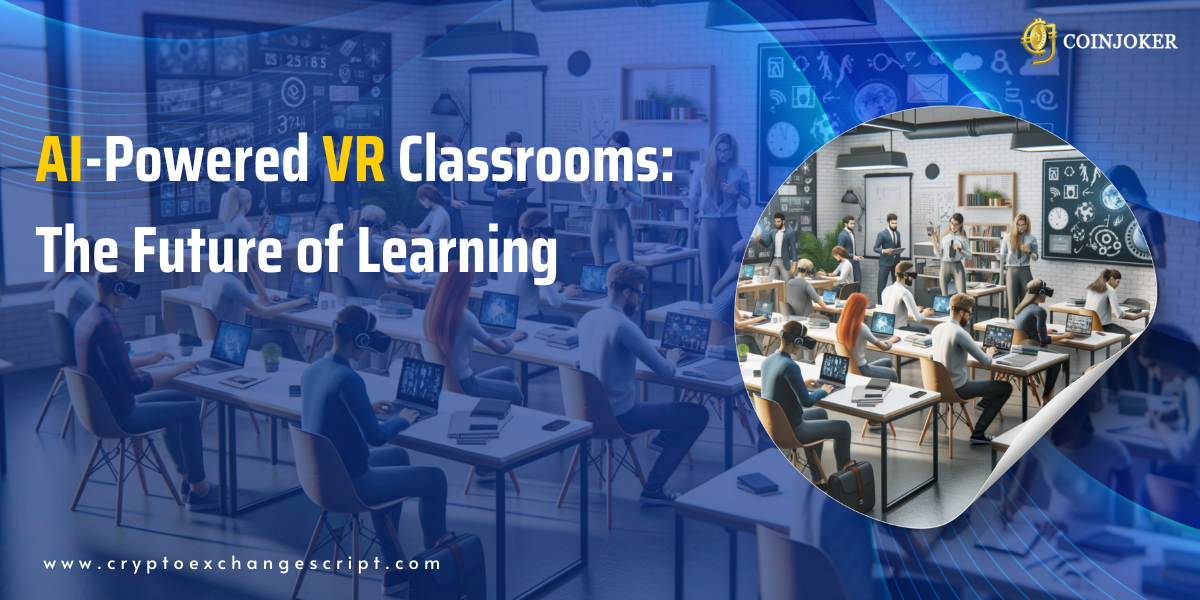Generative AI, a captivating field within artificial intelligence, represents the intersection of innovation and creativity. It plays a crucial role in AI by not only analyzing existing data but also generating entirely new content, spanning art, text, and music. Its emergence has led to transformative impacts across diverse industries, from healthcare to entertainment, pushing the boundaries of AI's capabilities. In this article, we'll delve into the intricacies of Generative AI, exploring its mechanisms, key model criteria, diverse applications, and more.
What is Generative AI?
Within the realm of artificial intelligence, Generative AI autonomously generates novel content, encompassing images, text, and even music. At its core, Generative AI revolves around the principle of using machine learning algorithms to generate data that closely resembles human-created data. Unlike traditional AI, which primarily focuses on analyzing and interpreting existing data, Generative AI goes a step further by producing entirely new and original content.
What sets Generative AI apart from other AI approaches is its capability to understand patterns, styles, and structures within the data it's trained on and then generate new data that adheres to these learned patterns. It's like having a virtual artist, writer, or composer that can produce content that appears indistinguishable from human-created work, making it a powerful tool for creative endeavors and problem-solving across a wide range of industries.
How Generative AI Functions
Generative AI operates on a foundation of complex technical processes, primarily powered by neural networks and large volumes of training data. Understanding its inner workings provides insight into its remarkable creative capabilities.
Generative AI centers on neural networks, particularly Generative Adversarial Networks (GANs) and Variational Autoencoders (VAEs). GANs comprise a generator and a discriminator, engaged in a continuous contest. The generator produces data, and the discriminator assesses it.
Training data assumes a critical role. A Generative AI model is fed vast quantities of diverse and representative data from the domain it's intended to generate content in. The model learns patterns, styles, and structures present in this data during the training phase. The quality and quantity of this data are critical factors in determining the model's performance.
In simple terms, Generative AI is akin to an artist who starts with a blank canvas (the generator) and a discerning art critic (the discriminator). The artist creates artwork, while the critic assesses it. Over time, the artist becomes adept at producing artwork that even the critic finds difficult to distinguish from human-made art. This iterative process of creation and evaluation results in the remarkable ability of Generative AI to generate data that is remarkably similar to what humans can produce.
Requirements for a Good Generative AI Model
Creating a powerful Generative AI model that can produce high-quality and realistic content demands attention to several key criteria:
Data Quality and Quantity: The foundation of any Generative AI model lies in the data it's trained on. High-quality, diverse, and abundant training data is crucial. This data should accurately represent the domain in which the AI will generate content. Without adequate data, the model may struggle to generate convincing results.
Architecture: The choice of architecture, such as GANs, VAEs, or Transformers, significantly impacts the model's performance. The architecture should align with the specific task and data characteristics. Different architectures excel in various domains, so selecting the right one is pivotal.
Training Techniques: Effective training techniques, including optimization algorithms and learning rate schedules, are essential. Fine-tuning these parameters can make a substantial difference in the model's ability to generate high-quality content.
Computational Resources: Generative AI models are computationally intensive, often requiring powerful hardware, including GPUs or TPUs, and substantial memory. Adequate computational resources ensure efficient model training and generation.
Ethical Considerations: Responsible AI development is crucial. Ensure that the model adheres to ethical and legal guidelines. Preventing the generation of harmful or inappropriate content is a paramount consideration.
By adhering to these requirements, developers can create Generative AI models that not only meet but exceed expectations, producing content that is both creative and valuable across various domains.
Creating Generative AI Models: A Step-by-Step Approach
Developing Generative AI models is a multifaceted process that requires careful planning and execution. Here's a step-by-step guide to creating these remarkable AI systems:
Data Collection: Start by collecting a large and diverse dataset relevant to the domain you want the AI to generate content in. Ensure data is clean, labeled, and well-organized.
Data Preprocessing: Clean, preprocess, and format the data to make it suitable for training. This may include tasks like resizing images, text tokenization, or audio feature extraction.
Model Selection: Choose the appropriate architecture for your task, such as GANs, VAEs, or Transformers. The selection depends on the specific requirements and characteristics of your data.
Model Training: Utilize powerful hardware, such as GPUs or TPUs, to train the model. Implement proper optimization algorithms, learning rate schedules, and loss functions. Training involves fine-tuning model parameters until it generates high-quality content.
Evaluation: Continuously assess the model's performance using metrics like Inception Score, FID Score, or domain-specific measures. Iteratively refine the model based on feedback.
Deployment: Once satisfied with the model's performance, deploy it for generating content in real-world applications.
Popular tools and libraries for Generative AI development include TensorFlow, PyTorch, Keras, and specialized libraries like OpenAI's GPT. Additionally, cloud-based services like Google Cloud AI and AWS AI can provide scalable infrastructure for training and deployment.
By following these steps and leveraging these resources, developers can embark on the exciting journey of creating Generative AI models that can generate content with creativity and precision.
Features of Generative AI Development
Generative AI development involves a set of essential features and capabilities to create effective and powerful AI models. These features include:
Customization: The ability to tailor Generative AI models to specific tasks and domains, ensuring they meet unique requirements.
Data Handling: Robust data collection, preprocessing, and augmentation capabilities to prepare high-quality training datasets.
Model Selection: A range of state-of-the-art architectures (e.g., GANs, VAEs, Transformers) to choose from based on the nature of the task.
Training Infrastructure: Access to high-performance computing resources like GPUs and TPUs to train models efficiently.
Hyperparameter Tuning: Tools and techniques for fine-tuning model parameters to achieve optimal performance.
Ethical Considerations: Incorporation of ethical guidelines and mechanisms to prevent the generation of harmful or inappropriate content.
Real-time Generation: Capabilities to generate content in real-time, suitable for applications like chatbots and dynamic content creation.
Scalability: The ability to scale Generative AI solutions to handle large volumes of data or users.
Interpretability: Tools and methods for understanding and interpreting model decisions and generated content.
Monitoring and Maintenance: Ongoing support and maintenance to ensure models continue to perform well and adapt to changing requirements.
Integration: The capacity to seamlessly integrate Generative AI models into existing applications and systems.
Security: Robust security measures to protect models, data, and content generated by Generative AI.
Compliance: Adherence to data privacy regulations and industry standards, ensuring compliance with legal requirements.
Documentation: Comprehensive documentation and user guides to facilitate model usage and development.
Consultation and Expertise: Access to AI experts who can provide guidance, strategy, and best practices for Generative AI projects.
Feedback Loops: Mechanisms for continuously improving models based on user feedback and evolving requirements.
Cross-platform Compatibility: Support for deploying Generative AI models across various platforms and devices.
These features collectively empower developers and organizations to harness the full potential of Generative AI and leverage it for a wide range of creative and practical applications.
Application Areas of Generative AI
Generative AI has found diverse and impactful applications across numerous industries and domains, showcasing its versatility and potential:
Art: Generative AI has revolutionized art creation, generating unique paintings, sculptures, and music compositions. For instance, AI-generated art pieces like "Portrait of Edmond de Belamy" have made waves in the art world.
Healthcare: In healthcare, it aids in medical image synthesis, drug discovery, and genomics research. Generative AI can produce realistic medical images for training AI diagnostic systems.
Language Generation: Natural language generation models like GPT-3 are used for content generation, chatbots, and automated writing. They assist in creating human-like text in customer support and content creation.
Entertainment: In the entertainment industry, Generative AI powers video game content generation, scriptwriting, and character design, enhancing the gaming and film experiences.
Fashion: AI-driven fashion design and recommendation systems create clothing designs, predict fashion trends, and offer personalized style suggestions.
Generative AI's impact extends to finance, marketing, and various scientific fields, making it a transformative force in today's technology landscape.
Benefits of Generative AI Development
Generative AI development offers numerous benefits, including:
Creativity Amplification: Generative AI can generate creative content such as art, music, and writing, providing novel ideas and inspiration to human creators.
Time and Cost Efficiency: It automates content generation, reducing the time and resources needed for tasks like design, content creation, and data synthesis.
Personalization: Generative AI can create personalized recommendations and experiences for users, improving customer satisfaction and engagement.
Enhanced Productivity: By automating repetitive tasks, it allows human professionals to focus on more strategic and value-added activities.
Consistency: AI-generated content is consistently high-quality, avoiding human errors and inconsistencies.
Scalability: Generative AI can generate large volumes of content rapidly, making it suitable for applications requiring massive data generation.
Innovation: It fosters innovation by providing new tools and capabilities for various industries, from healthcare to entertainment.
Data Augmentation: Generative AI can generate synthetic data for training machine learning models, helping to overcome data scarcity issues.
Competitive Advantage: Adopting Generative AI can give businesses a competitive edge by staying at the forefront of technological advancements.
Cost Reduction: By automating tasks, it reduces the need for manual labor, leading to cost savings in the long run.
Unbiased Decision-Making: It can generate content and recommendations free from human biases, promoting fair and equitable outcomes.
Language Translation: Generative AI aids in translating content between languages, facilitating global communication and expansion.
Healthcare Advancements: It contributes to medical image synthesis, drug discovery, and personalized treatment plans, improving healthcare outcomes.
Enhanced User Experiences: In gaming and entertainment, Generative AI can create immersive and dynamic content, elevating user experiences.
What Kind of Generative AI Development Services does Coinjoker Offer?
Generative AI Consulting
Our consultants analyze client data, considering variables like data type and intended output, to recommend the most effective generative AI approaches. Given the evolving nature of generative AI, this consultation can offer diverse solutions for unique AI-powered applications.
Cloning Generative AI Models
In the realm of artificial intelligence, model replication plays a pivotal role. This iterative process involves recreating existing models to replicate their functionalities and performance, pushing the boundaries of generative AI capabilities and fostering continuous improvement within the AI community.
Generative AI Development Model
Our Generative AI Development Model leverages advanced algorithms to create original and valuable content. This empowers businesses with automated content generation, personalized recommendations, and enriched customer experiences. By harnessing the power of machine learning, this innovative approach transforms industries and optimizes various business processes with efficiency and creativity.
Fine-Tuning Models
Fine-tuning involves adapting pre-trained machine learning models to specific tasks or datasets. This technique expedites the development of potent AI solutions while reducing data and computational requirements.
Robotic Process Automation (RPA)
RPA is an innovative technology that automates repetitive, rule-based tasks across industries using software robots or "bots." RPA enhances efficiency, accuracy, and resource allocation, freeing human talent for strategic and creative endeavors.
Custom AI Services
Tailored to the specific needs of businesses and individuals, our custom AI services provide bespoke artificial intelligence solutions. These services empower organizations to gain a competitive edge, enhance decision-making processes, and unlock new avenues for growth and innovation.
Coinjoker's Generative AI Development Services are designed to empower your projects with the latest advancements in AI technology, delivering creative and innovative solutions tailored to your unique requirements.
Why Choose Coinjoker for Generative AI Development?
Being the best Generative AI development company, Coinjoker truly helps you in developing “A” grade generative AI models for your business needs. With a proven track record of delivering innovative solutions, our team of experts excels in creating cutting-edge AI models tailored to your needs. Contact us today to explore the limitless possibilities of Generative AI. Your AI journey starts here.
Talk With Our Experts >> Generative AI Development Company
Trending Blogs
AR/VR
AI Avatars in VR: Crafting Digital Souls for Virtual Worlds
In today’s virtual-first world, the lines between fact and digital experiences continue to blur. O ...

AR/VR
AI-Powered VR Classrooms: The Future of Learning
In the fast-evolving world of education, generation is reshaping how we teach and study. Among the m ...

Cryptocurrency Exchange
Toobit Clone Script: A Ready-Made Solution to Start Your Crypto Exchange
The cryptocurrency market has been on an incredible run lately, growing at a pace that’s tough to ...

Cryptocurrency Tokens
How to Successfully Launch a Solana DeFi Wallet in 2025
The DeFi (Decentralized Finance) industry is evolving rapidly, providing permissionless and decentra ...

Cryptocurrency Tokens
Ethereum Pectra Upgrade: Unlocking the Next Era of Blockchain Innovation
The Ethereum network is continuously evolving, and the upcoming Pectra upgrade represents a pivotal ...

Cryptocurrency Exchange
Secure Your Crypto: 10 Best Wallets for Digital Asset Storage in 2025
As the crypto landscape continues to evolve, one essential tool remains at the heart of the industry ...

Cryptocurrency Exchange
NOWPayments Clone Script: Simplifying Cryptocurrency Transactions for Businesses
In virtual technology, cryptocurrency payments are transforming the way businesses handle transactio ...

Cryptocurrency Exchange
Gemini Clone Script: Fast-Track Your Crypto Exchange Development
In the ever-evolving world of cryptocurrencies, launching a secure and user friendly exchange platfo ...

Cryptocurrency Exchange
SimpleSwap Clone Script – Start a Hassle-Free Crypto Swap Platform
The cryptocurrency industry has witnessed an exponential demand increase for instant and seamless cr ...

Cryptocurrency Exchange
MEXC Clone Script: A Ready-Made Solution for Crypto Entrepreneurs
The cryptocurrency marketplace is booming, and with it comes the ever-growing demand for modern and ...
